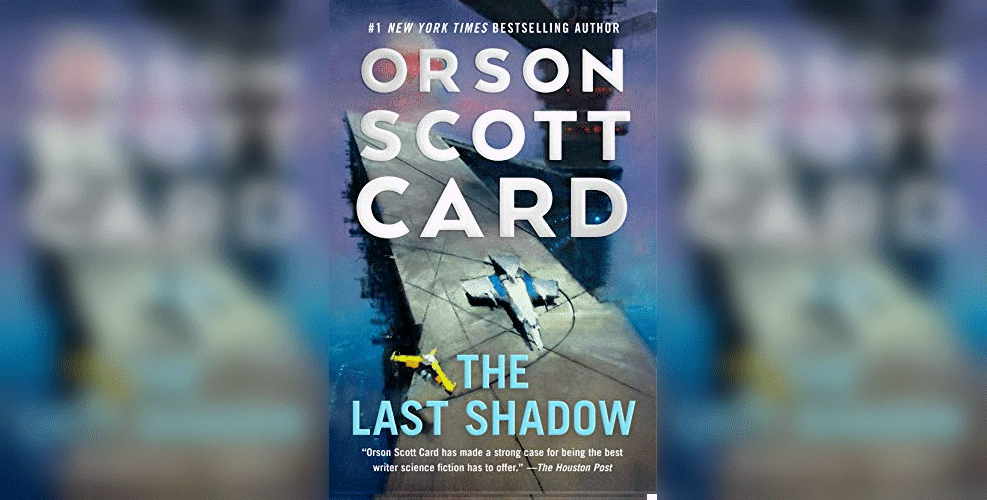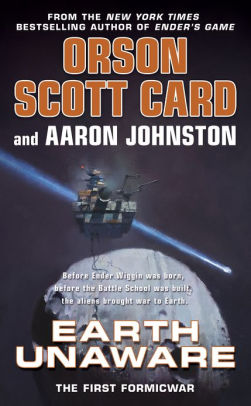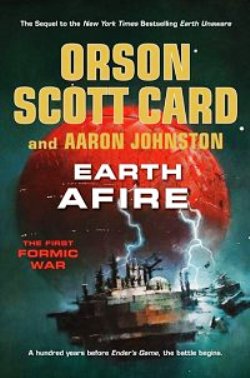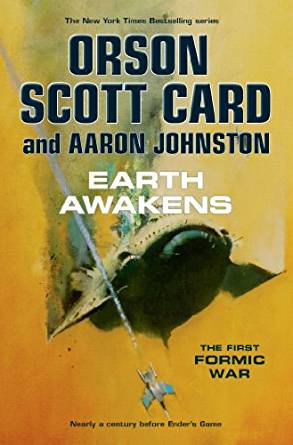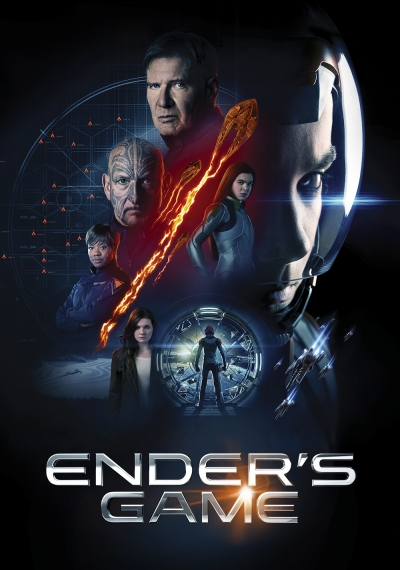The First Formic War is a trilogy (Earth Unaware, Earth Afire, Earth Awakens) set in the Enderverse leading up to the first Formic invasion.
I was both excited and afraid when I found out there would a prequel trilogy about the initial Bugger (Formic) invasion. I was excited because I love Ender’s Game. I didn’t get too much into the Shadow series, but I’ve read all of the novels directly involving Ender repeatedly. I was afraid because I hate prequels. It seems to me that every prequel in existence tramples on existing canon. I don’t know if it is because authors are incapable of reading their own source material, or too blinded by the dollar signs, but they can’t keep their stories straight.
The First Contact
Ender’s Game spells out the first contact story pretty well. Eros (the Asteroid) suddenly blacks out, a team is sent to investigate, and they are subsequently murdered by Buggers. I really expected this story to play out in the first book. Therefore I was quite surprised when it never did. In Earth Unaware, first contact takes place in the Kuiper Belt. It makes sense that it would probably be further out, particularly with the current interest in space mining and expansion in general, but still.
The Terminology
At some point Orson Scott Card decided not to use the slang term Bugger and instead always use Formic. The term Bugger does not exist in these books, nor in the Ender’s Game movie. I feel that is very strange. It is in our nature to label our enemies with derogatory or otherwise slang names. And yet other than the novel Ender’s Game and Speaker For the Dead, people are very careful to always use the technical term.
The Technology
My number one issue with the books is their introduction of what eventually will be called the Little Doctor (or MD Device). It is clearly started in Ender’s Game that the Little Doctor came after the second invasion. This is further backed up in Ender In Exile when Ender discovers the Little Doctor is actually a result of an uncontained faster-than-light drive, which humans got from the Buggers. It is stated by Ender and Mazer that up until the start of the third war, they were using nuclear missiles as their primary space-based weapon. So it is frustrating to read about the Little Doctor being developed before the Buggers arrive.
In contrast, the introduction of what becomes ultimately becomes the Battle Room gear is a nice touch. It shows that humans were developing these devices for the military already, and they just adapted it later for Battle School.
The Action
The problem with prequels is that if you are going to include a character who shows up later (such as Mazer Rackman) you know that character is going to make it. There are several times throughout the books where he is in trouble, and to me, these are wasted pages. You can’t kill a character who is going to show up later, so there is no suspense. Mazer has a love interest that he has to leave because of his duty to the military. Is this a heart breaking moment? No, because we know from Ender’s Game that when Mazer left in hyperspace to jump forward in time, he left behind a wife and family. It is hard to get anxious about events that you know are going to work out.
The new characters were all more interesting to me. Because there isn’t anything keeping them alive. An interesting character in a bad situation will peak my interest. An essentially invincible character (from a future story point of view) on the other hand is less interesting (I’m looking at you, Superman). The tension comes because sometimes interesting characters die (unless your name is George R. R. Martin, in which all of them die).
The Summary
These books are okay. The cover credits Orson Scott Card and Aaron Johnston as the writers. Based on the writing, you get the impression it is more of the latter than the former. Everything about the book just doesn’t feel like Card, and I feel like he was more of a consultant than anything else. At no point did I ever stop reading because of the writing (such as with Eragon). They are good stories in there and interesting ideas but they are not great.
I feel like the things which were just briefly mentioned (such as China’s decimation, or the Battle of the Belt) were done well. The more specific the details, the more the prequels seem to feel the need to run them over.
Like this:
Like Loading...

